Top 3 Email Tips from Tim Hynes
The following tips came from a recent interview on my Dr Email Q&A Forum with Tim Hynes (co-founder of Spacemakers and the Email Ninja e-learning program).
We were comparing notes about our greatest insights from our collective years of research and experience in best practice email management skills.
1: The 2 Minute Rule
Tim reckons this is his number 1 tip for managing the inbox. The two minute rule is an idea from American productivity guru David Allen (known for his Getting Things Done or GTD process), in which he states it is quicker to spend up to two minutes the first time you come across a new input (such as an email), then the time it takes to skip past it, stored, retrieve it, read it and make a decision on it some time later.
Taking the time to read and action an email the first time it is looked at is an enormous time saver. So many people well look at an email and then skip to another email and then find themselves going back to read the same email two, three, five, a dozen or more times before they actually take action on it.
Applying the two minute rule not only saves an enormous amount of time, but also gives a great sense of accomplishment and satisfaction at having dealt with each email rather than putting it off to be dealt with at another time. It also saves a surprising amount of headspace.
Every time we look at an email, it opens up some sort of a file in our subconscious mind and if we do this with lots of email it starts to use up lots of RAM (random access memory). A large part of our subconscious mind is now trying to keep track of issues we have become aware of via the email but do not have under control And this makes it harder to stay focused and concentrate or what is immediately in front of us.
2: Top to Bottom
Tim's second tip extends on the 2 minute rule. He says that we should go through our email one at a time starting at the top of the screen and working our way down through each email one at a time, rather than scrolling up and down and cherry picking the ones we pay attention to.
As we look at each email we make one of four possible decisions about it – the powerful and proven 4D method. These 4D’s are:
1. Delete the email
2. Deal with it straight away (using the 2 minute rule mentioned above)
3. Delegate it to someone else
4. Decide what next action is needed and schedule when to take that action.
Using this ‘top to bottom’ approach requires time, which is why the ‘When’ strategy that I advocate is so important. Processing email takes time but most of us don’t control when we spend this time. We tend to have an unstructured rather than a structured approach to managing email and are largely reactive rather than proactive to this aspect of our daily workload. As a result, we often handle email with only partial rather then full attention as we work in a constant state of distraction and multi-tasking.
The key to being effective is to schedule specific times of the day to process email so that it is handled just once, the first time it is viewed. There are various models that can be used according to your role or the type of day you are having - process email every half hour, once per hour, four times a day or only once or twice a day.
3: Turn Off All Email Alerts
Tim’s third tip is to turn off all email alerts and says the difference this makes can be amazing for getting control of your concentration and focus. I have found most people struggle with doing this – as humans we like to be available, we like to help, we like to know what’s going on and we fear missing something urgent.
That’s why scheduling specific times when you WILL process email allows you ‘peace of mind’, as you know when you will attend to your inbox and are not anxious about when you will see your email. The number of emails that are truly urgent are far less than you might think and you can implement a policy or process for those that are (I suggest we should not rely on email alone for urgent messages – accompany or replace it with a phone or text or instant message).
If you’d like to watch my full interview with Tim, click here.
If you’d like to help your team to revolutionise the way you manage the inbox in 2023, feel free to reach out for chat about booking me for conference presentation, a training masterclass or a coaching program. You will be astonished at just how much time, money and headspace can be saved when you implement a range of proven ‘best practices’ – what you learn will change the way you work . . . forever!
Want to Learn More?
To learn more about how to manage your emails, click on the links below:
Join the Facebook Email Productivity Support Group and ask Steuart and other members questions for help with your email problems
Join the Free Weekly Dr Email Q&A Forum on Zoom for tips, info, including special guests
Book a 15-Minute Chat with Steuart to find out what program would work best for you
Register for Revolutionise You Inbox Online program if you have completed Triage Your Inbox, email steuart@steuartsnooks.com.au to get the coupon code to take the Triage price off the program
Connect with Steuart on LinkedIn for tips and info on email productivity
Follow Steuart Snooks Email Productivity on Facebook for tips and info on email productivity

